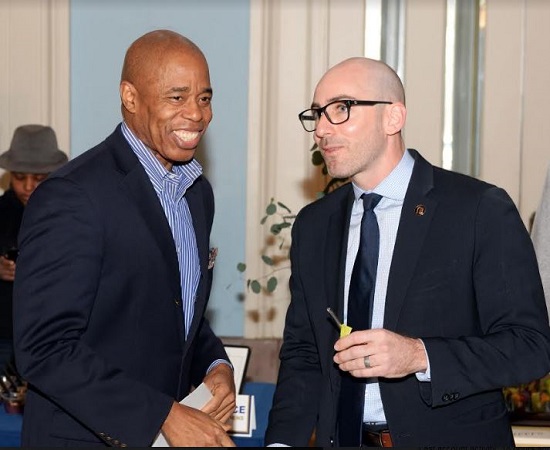It’s a formula as Simple as ABC: Amazon, Brooklyn, Commerce
Hoan (BCC), Adams (BBP) Lead A Charge to Bring Amazon HQ 2 To 'Coolest Place on the Planet'

“We’re going to bring it home, no matter what,” Andrew Hoan, president and CEO of the Brooklyn Chamber of Commerce, promised at a news event Wednesday morning. No, he wasn’t talking about a sports championship, but a much bigger economic prize: The new second home of Amazon, worth an estimated 50,000 new jobs and $5 billion in capital investment. When the online shopping giant announced its plans last week for a second headquarters outside Seattle, the company set off a scramble among cities to get their bids together by the deadline of Oct. 19. “This is the trophy deal of the decade as far as I can tell,” an economic-development expert told The New York Times.
New York’s bid will come from the city at large, but Brooklyn’s leadership is leaping into the fray with a lobbying effort kicked off by the chamber and Borough President Eric Adams. In an open letter to Amazon (full text at https://thebridgebk.com/brooklyn-gears-up-bid-new-amazon-hq/), they declared, “Brooklyn is the prime location for Amazon and its future; you might call this ‘Brooklyn Prime!’” That, in fact, will be the campaign slogan and social-media tag: #BrooklynPrime.
At a previously scheduled speech by the borough president at Brooklyn Law School, sponsored by the chamber, Adams and Hoan seized the moment to tout their plan to round up a coalition of Brooklyn leaders from business, education and other institutions to put together a winning argument to snag what Amazon is calling HQ2. “Brooklyn is already a good product,” said Adams, “but anytime you build a team, you need to make sure you have all the players that are involved to get to the championship that we’re looking for.”

Brooklyn Boro
View MoreNew York City’s most populous borough, Brooklyn, is home to nearly 2.6 million residents. If Brooklyn were an independent city it would be the fourth largest city in the United States. While Brooklyn has become the epitome of ‘cool and hip’ in recent years, for those that were born here, raised families here and improved communities over the years, Brooklyn has never been ‘uncool’.